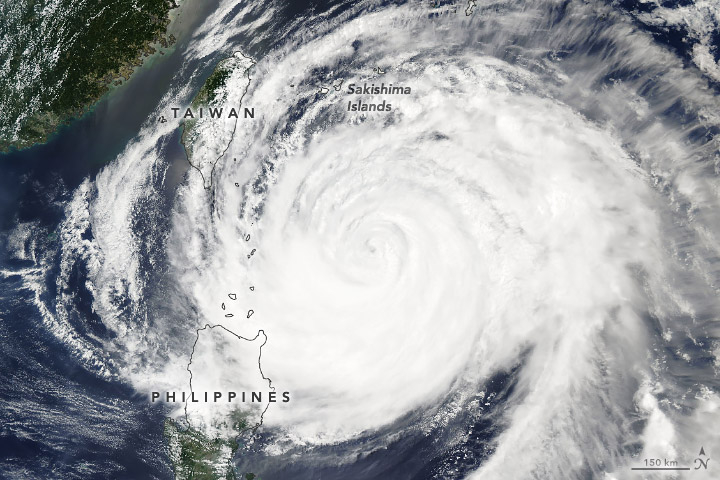Publié le 31 mai 2023
The Moderate Resolution Imaging Spectroradiometer (MODIS) on NASA’s Aqua satellite acquired this natural-color image of Mawar at 05:20 Universal Time on May 30, 2023. Though the storm appeared to be bearing down on Taiwan, it was in the process of turning north and away from the island. After rapidly intensifying between May 24 and 25, Mawar then weakened significantly as it encountered cooler water temperatures and less favorable wind shear conditions as it neared Taiwan.

After strengthening rapidly and grazing the Philippines and Taiwan, the storm headed north toward the Sakishima Islands.
Click here to view this image at full resolution.
Around the time of the MODIS image, the U.S. Joint Typhoon Warning Center reported that Mawar had sustained winds of 120 kilometers (80 miles) per hour, with gusts up to 150 kilometers per hour. Though Mawar did not strike the Philippines or Taiwan directly, the outer bands of the storm brought heavy rains to northern Luzon and rough seas to the eastern coast of Taiwan. Forecasters expected the weakening storm to next move north toward the Sakishima Islands, an island group in southern Japan, and then northeast and away from the Japanese mainland.
The Western Pacific typhoon season stretches across the entire year, but most storms form between May and October. As of May 30, one named storm and one typhoon had formed so far in 2023.
Source:
Voiland, A. (2023, May 31). Mawar Churns in the Pacific. NASA Earth Observatory.